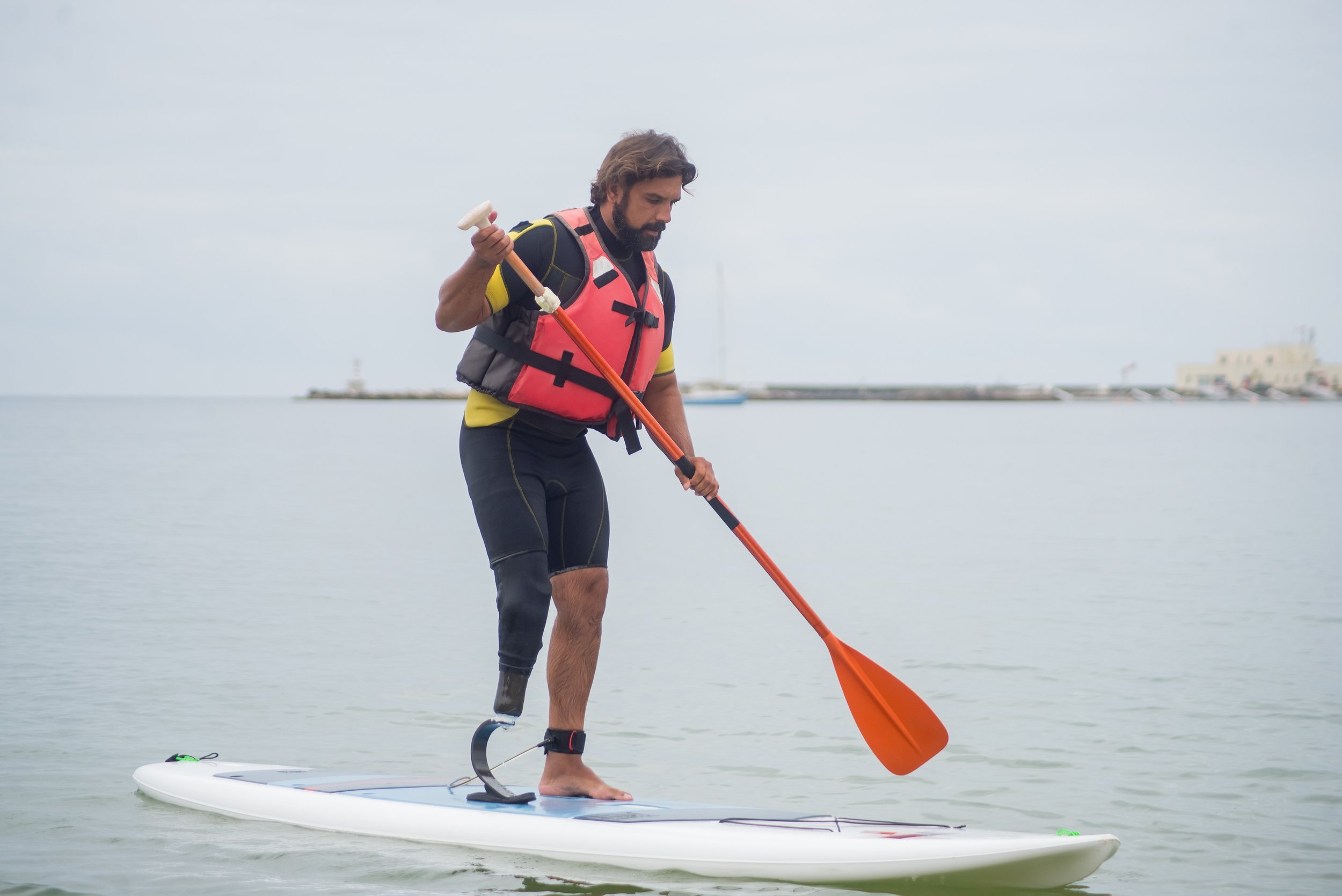Motio Case Study 3: A Comprehensive Analysis of James Swinton's Motio Functional Report
Meet James Swinton, whose life took a transformative turn with the beginning of peripheral arterial disease, leading to the loss of his left leg above the knee in early 2022. As he got on his prosthetic journey later that year, the initial stages proved to be challenging. Struggling to adapt to his prosthetic device, James gained weight and decreased physical activity, relying on a short-distance cane and a mobility scooter for longer ones.
Exploring Motio Functional Report Metrics - Daily Steps
During the long-term acquisition, the Motio StepWatch™ system gathers step-related information and integrates it with in-clinic patient outcome results to create a deeper understanding of each prosthetic user's mobility potential. The different metrics and visuals that are presented on the Motio Functional Report allow the clinician to comprehend what the prosthetic users are usually accomplishing in their daily lives. Then, they can use this information as a benchmark when evaluating their potential and deciding which K-level recommendation would be more appropriate to each case, before getting the Motio Functional Level. The Motio Functional Level, suggested by the Motio StepWatch, will then take into account the clinician's decision, along with the remaining report context.
Essential Tips for Exploring the World with Limb Loss and Limb Differences
As the sun shines brighter and the temperature rises, summer beckons us to embark on exciting adventures and explore new horizons. For prosthetic users, the season brings a unique set of considerations and opportunities when it comes to travel. Whether you're planning a beach getaway, a hiking expedition, or simply longing for a refreshing dip in the pool, we're here to ensure that your summer travels are as enjoyable and hassle-free as possible.
For a prosthetic user, it is crucial to feel confident, comfortable, and well-prepared while engaging in various activities and embracing the season's spirit. In this blog post, we'll be sharing essential tips, insights, and recommendations specifically for them venturing out during the summer months.
Introducing UI Testing: Our Process and Tips
Adapttech takes a multidisciplinary approach to product development, involving a diverse group of skilled professionals committed to transparency in their design process. In a previous post titled "Design Control Process," we outlined our approach to creating user-friendly products.
The History of Prosthetic Development and Advancements
It is important to understand and appreciate the history of prosthetic development and advancements to see how far we have come today. This blog will give an overview of what prosthetics were like during key time periods. Enjoy your reading!
As we go back in time, the earliest-known prosthetic toe belonged to an Egyptian mummy. This was made from wood and leather and was discovered in the 1800s. Dating from 300 BC, the Capua leg was found in Italy and is one of the oldest known prosthetic leg, discovered in the late 1800s. It was made of a wooden core sheathed in bronze. Unfortunately, the Capua leg was destroyed amid the World War II bombings, but you can find a replica at the Science Museum in London.
The evolution of adaptive sports: from rehabilitation to competition
Adaptive sports, also known as parasports, are sports that have been adapted to allow individuals with disabilities (both physical and cognitive) to participate. These sports have come a long way since their humble beginnings in the late 19th and early 20th centuries when they were limited to rehabilitation and therapeutic settings. Today, adaptive sports have evolved into competitive sports for individuals with disabilities, allowing them to participate in sports and physical activity on a level playing field.
Lower-Limb Prosthetic Prescription: The Importance of Outcomes and Data
There are an estimated 65 million people that live with limb amputations globally, with 1.5 million people undergoing amputations—mostly of the lower limb—each year. Most people with amputations need access to prosthetic services, and this need is expected to double by 2050. [1] With a limited number of physicians with sufficient expertise in prosthetic prescription and amputee rehabilitation, there is a growing need for well-coordinated teams to guide optimal prescription and rehabilitation.
What are the Psychological Effects of an Amputation? How Can One Help?
Most individuals that undergo an amputation will experience a significant and complex transition that doesn’t only affect their physical well-being but also plays a big part on one’s mental and emotional state. It can, in fact, lead to a wide range of psychological reactions. Losing a limb makes self-care and the care for one’s family very hard, especially during the adaptation period.
Why is a good socket fit so important?
There is a variety of reasons why a person can be amputated, such as traumatic injuries, congenital anomalies, vascular diseases, or cancer [1]. When a leg or other extremity is amputated or lost, a prosthesis plays a key role in rehabilitation. The goal of an amputee using a prosthetic limb is to restore function and improve physical and psychosocial functions, such as performing daily activities, optimising the quality of life, returning to work [3] and remaining independent.
A perspective on prosthetic technology and mental health of lower limb amputees
A high-tech prosthesis can now offer the possibility of regaining mobility and some day-to-day independence. But, as Williamson et al mentioned almost 30 years ago, in 1994, while such technology is welcome and exciting because of its rehabilitative potential, it is important that attention is also focused on psychosocial issues that may affect physical rehabilitation [2].
Diabetic patients and how to encourage prosthetic care
November is National Diabetes Month. This movement hopes to raise awareness of symptoms, promote healthy living and ensure people are aware of risk factors. At Adapttech we'd like to partake in the initiative and raise awareness of this issue.
Enhancing the clinical practice of prosthetists: gait analysis methods
Although walking poses little challenge to individuals who are healthy, those with gait pathologies or lower-limb amputations can find it tiring and difficult [4]. Gait analysis is a well-established tool for the quantitative assessment of gait disturbances providing functional diagnosis, assessment for treatment planning, and monitoring of disease progress [1].














